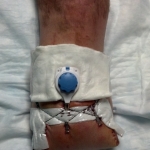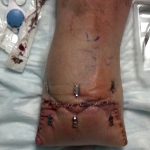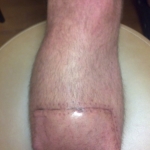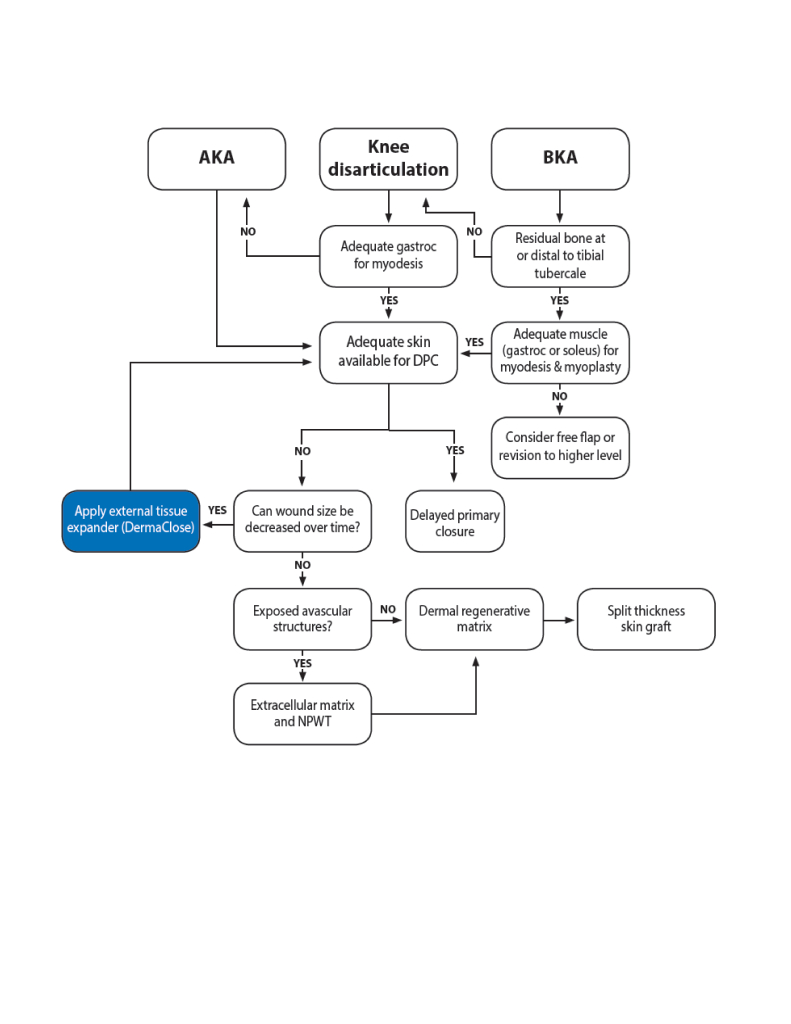External Tissue Expansion For Amputation
Get cleaner, tissue-sparing (limb preserving) amputations
Preservation of residual limb length in lower extremity amputations is critical for optimizing prosthetic fitting and enhancing functional ambulation. As such, the primary goal of amputation surgery is to preserve limb length.
Preserving limb length, functional segments and stable joints contributes to:
However, preservation of residual limb length requires careful management of the amputation wound’s residual bony segment and its associated soft tissue envelope.
The soft tissue envelope is usually a very challenging aspect of potential residual amputation salvage versus more proximal revision amputation. An objective of amputation surgery is to provide an adequately padded, durable soft tissue surface suitable for prosthetic fitting and wear. Thus, not only is care in the handling and preser- vation of available soft tissue crucial, but one must also preserve appropriate muscle balancing for achieving optimal functional results.
DermaClose preserves limb length to maximize outcomes
“…a 25% to 60% increase in energy expenditure above
baseline could be the difference between a mobile vs
wheelchair dependent 60 year old in the future.”
Illustrative cases
Case 2. Below knee amputation used with NPWT (VAC)


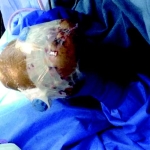
The DermaClose External Tissue Expander can be used in combination with NPWT (VAC). When following instructions for utilizing the DermaClose with NPWT, the tissue will continue to expand in conjunction with the use of NPWT, and the wound will typically be ready to close in 3-5 days.
Case 3. DermaClose used to offload tension on below knee amputation.
In this case the DermaClose was used to offload a high tension closure on a below knee amputation. The DermaClose anchors are placed 3cm from the closure. As the tension controller is tightened, the tissue is pulled from behind the anchors, and tissue in front of the anchors is pushed toward the closure. This use of the DermaClose tissue expander releases tension on the closure, increases vascularity for faster healing and reduces chance of dehiscence.
Decision matrix for management of lower extremity amputation length preservation
Fleming ME, O’Daniel A, Bharmal H, Valerio I. Application of the Orthoplastic Reconstructive Ladder to Preserve Lower Extremity Amputation Length. Ann Plast Surg. 2014;73(2):183-189. DOI:10.1097/SAP.0b013e3182a638d8


